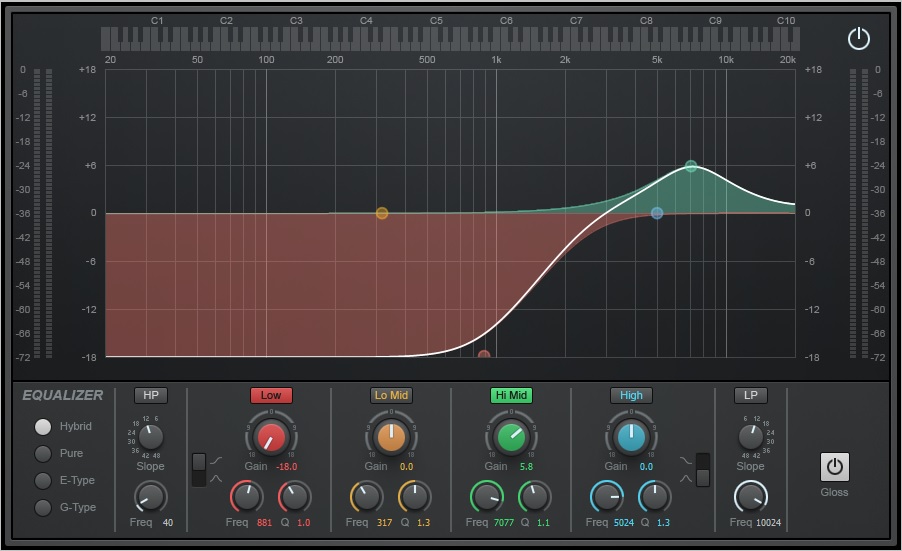Make your analog drum sounds beefier and more powerful
Attention hip-hop, techno, and other fans of those old analog drum sounds from devices like the Roland TR-808—we can now make them a lot more powerful. Note that any of these options can be taken to absurd levels if desired by just cranking everything up higher. We’ll go through drum by drum, and consider signal processing options to beef up the sound. Note that the screen shots show examples from Cakewalk by BandLab and Studio One, but the settings for EQ and other processors translate well to other programs.
KICK
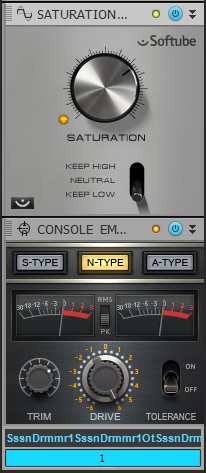
Some distortion helps this cut through a mix. Softube’s Saturation Knob (available for free from Softube.com) is ideal if you set the switch to Keep Low, because it maintains that solid low end for the kick, then adds hardness to the top so the kick cuts better. A Saturation setting around 2 to 3 o’clock works for me. If you want more distortion for your “Tribute to Late 90s Belgian Hardcore” project, increase the level going into the Saturation plug-in. The overall level won’t go up much; the sound just gets more distorted.
If you have a Console Emulator plug-in that models a mixer’s input transformer, and you can overdrive, that adds some “iron” to the sound. With Cakewalk, try the N-Type with Trim at 2:00 o’clock and Drive turned up to 6.
SNARE
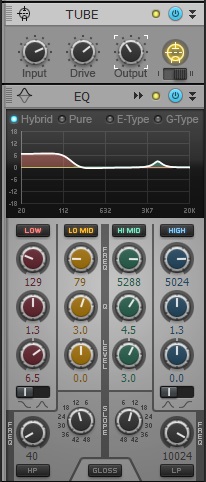
A little distortion again adds a satisfying degree of crud, but this time, you want distortion that doesn’t distort the highs. I always liked Sonar’s Tube distortion because it had a Type II option that doesn’t distort highs (which keeps the snare from sounding too much like sandpaper); unfortunately, it’s no longer included in Cakewalk. The Softube Saturation Knob’s Keep High option is a good alternative that’s DAW-independent.
Adding a bass boost (try a bass shelf at 130 Hz with about 6 dB of boost) gives more “wood” to the sound, as if it was an electronic snare with a wooden shell. Try it and you’ll hear what I mean. A slight upper mid boost around 5 kHz adds some “snap.” These two EQ boosts give a more defined snare sound.
HI-HAT
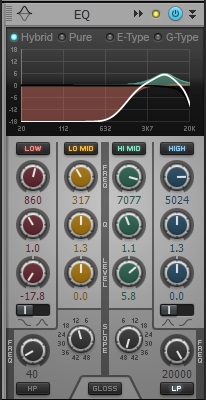
Now, we have a big kick that takes over the low end. However, it won’t fight with the bass; the distortion gives the kick more highs, so it cedes more of the low frequencies to the bass. We also have a tight snare that handles the mids. Let’s process the hi-hat to fill in the high end.
Cutting the lows and boosting the highs causes the hi-hat sound to complement the processed kick and snare. By emphasizing the highs, we can bring the hi-hat down in the mix to leave room for other high-frequency instruments, but you’ll still be able to hear the metronomic hi-hat at work.
The low shelf filter cuts response pretty dramatically under 1 kHz. Meanwhile, there’s a major boost around 7 kHz to bring out the hi-hat’s sizzle. To prevent it from going too nuts on the high end, enable the Low-pass filter. Set the slope to -48 dB/octave and LP Freq at 20 kHz. This way the hi-hat occupies a “slice” of high frequencies where you can hear it well, but it doesn’t take up too much of the audio spectrum.
TOMS
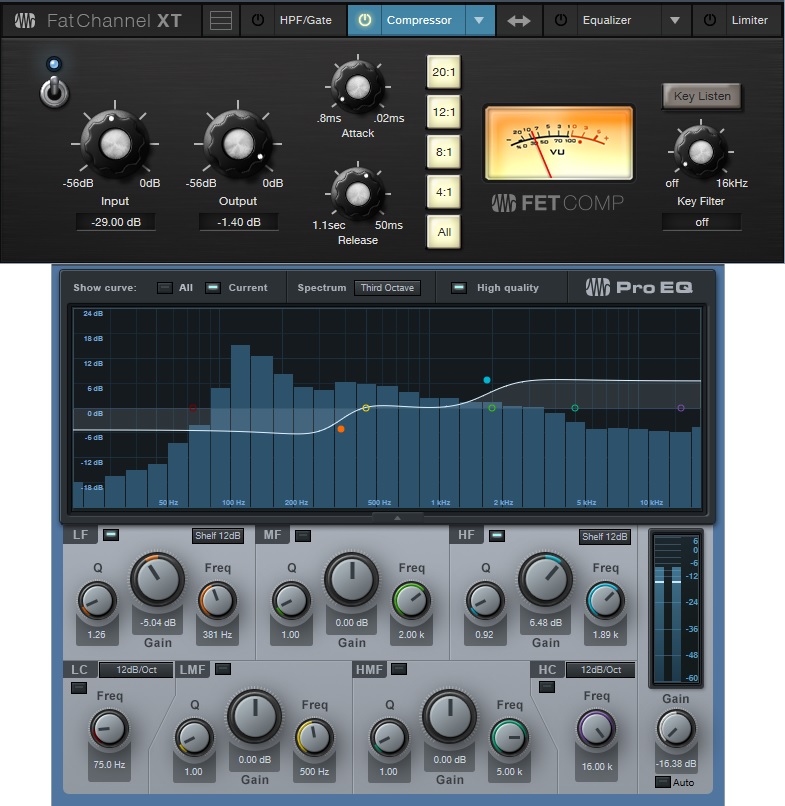
I’m not a big fan of the TR-808-type tom sound; it tends to be “bottom-heavy” and has no stick sound. My preferred fix is some limiting with an 1176-type compressor emulation, a low-frequency shelf rolloff, and a high-frequency shelf boost. Problem solved.
After all these changes, do a global bypass on the processing…and admire your handiwork!
